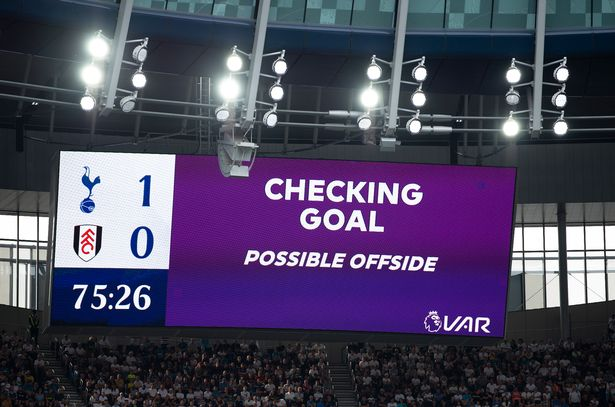VAR has been one of the most talked about introductions to football over the last few years. It has completely revolutionised how a match is refereed, but it is not as influential as you might think.
Who makes the VAR decision? The on-field referee is still the one who makes the final decision when it comes to VAR reviews. The VAR system is simply there to help the referee, by allowing them the opportunity to see the incident again, should the VAR Official feel the referee may have missed something. The VAR official does not make the final decision.

When VAR started to be introduced into football in 2019, it was made very clear that the technology was simply there to help the on-field referee. VAR was not being brought in to make the decision for the referee.
When the referee makes the decision, VAR has been brought in to see if the referee has made a clear error. It means that VAR won’t get involved unless there is strong evidence that the referee made a mistake in one of their decisions.
If the VAR has decided that the referee has made a clear error or there was a serious missed incident then they will usually call the referee over to the monitor. At the monitor, the referee will be shown various replays of the incident in question. All that the VAR does is advise the referee as to whether they think something has been missed or a clear error has been made.
Once they have decided this, it is down to the on-field referee to make the final decision. This was how VAR was intended to be used as the on-field referee is still supposed to make the final decision. But even in the first few years of VAR, we have seen a pattern emerge.
Whenever the team VAR think there has been a clear error or a missed incident they will call the referee over to the monitor. Almost every time that a ref is called over to the monitor, they will usually change their decision as this is what the VAR official thinks they should do, otherwise, they won’t call them over to the monitor.
There is one case where the VAR will make the final decision. This is for an offside. Offsides are usually checked by the VAR when they lead to a goal, penalty or red card incident. In this case, the VAR will draw the offside lines on one of the replays to see whether the player is onside or offside.
While this can be looked at as the VAR making the decision, offsides are seen as a factual decision and so they are not included in the clear and obvious error part of VAR. This is why VAR makes the decision on the offside. VAR also makes the decision on whether a foul was committed inside or outside of the box as this is also seen as a factual decision, not a subjective one.
What can VAR be used on in the Premier League?
VAR is used in the Premier League, but in a very specific way. There are four things that VAR is supposed to monitor, which fall under the category of a clear and obvious error or serious missed incident by the referee.
1. Goals
The first and most major duty of VAR is to check on the legality of every goal that is scored. This is also one of the biggest jobs for VAR. They need to see whether there were any fouls missed in the build-up or even a handball. If there is a subjective decision missed in the lead-up to a goal, the referee will be called over to the screen to review their decision.
If there are factual decisions in the build-up, the VAR can inform the referee to overturn the goal without the referee reviewing the decision. These include things like offsides or the ball going out of play before the goal is scored.
2. Penalty decisions
One of the most common uses of VAR is to review penalty decisions. If there are calls for a penalty but the referee does not award one, VAR can check to see if there was a clear and obvious error made by the referee. If there was, they can call the referee over to the screen to review their decision, with referees often awarding a penalty when they are brought over to the screen.
VAR will also do the opposite of this, checking whether the referee has made an error in awarding a penalty. VAR cannot directly overturn the referee’s decision but can advise the referee to take another look at the incident on replays.
3. Red cards
One of the uses of VAR brought in to help referees is when to award red cards. All red cards that are awarded will be checked by VAR and these can be overturned by the referee after review. VAR will also check any possible red card incidents that might have gone unpunished or even incidents where a yellow card should be upgraded to a red card.
One of the more controversial parts of this rule is that VAR cannot intervene when a player has been awarded a second yellow card, resulting in a red card. The only way that they can have any input on this is if the second yellow card should have been a straight red card. It means if a player is incorrectly sent off with a second yellow card, there is nothing that VAR can do about it.
4. Mistaken Identity
One of the rarest uses of VAR is for any case of mistaken identity. If the referee awards a yellow or red card to the wrong player then VAR will intervene and advise the referee on the right player to award the card to.
Can the referee overrule VAR?
VAR only makes decisions itself on factual decisions like for an offsides or where a foul was committed. The VAR does not make a decision on anything else, instead, it advises the referee to review their decision using the replay, which is sometimes seen as asking the referee to overturn their decision.
However, we do still see referees sticking with their decision, even after being told to review their decision at the monitor. It just does not happen particularly often.
